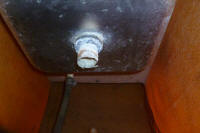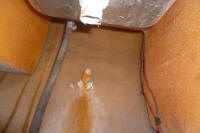
110 Cookson Lane | Whitefield, ME 04353 | 207-232-7600 | tim@lackeysailing.com
The owner asked me to evaluate the sink drain plumbing to determine its condition and whether we should replace the hose. The sink drained above the waterline, but he wanted to be sure the hose was sound. After looking at the hose and its rusting clamps, I decided that replacement would be worthwhile.
As I applied a tool to the encrusted hose clamp directly beneath the sink drain, the entire drain fitting sheared off at the top end of the hose, a victim of corrosion, three decades of service, and marginal suitability for the task in the first place.
Access to the space beneath the sink was tight and awkward, so I was happy to find that the sink was secured from the top with screws, making removal straightforward; the old silicone sink flange sealant released without a whimper. Removing the sink gave me far better access to the drain fitting, which I'd need to replace.
After cutting off the old fitting with a grinder, I located and ordered a replacement sink drain to fit (1-5/16" opening; 1-3/4" flange; 1" hose diameter), though I found out later in the day that the item was backordered, so it wouldn't be here as soon as I'd hoped. Meanwhile, I cut a new length of 1" drain hose and prepared it for eventual installation once the new sink drain arrived.
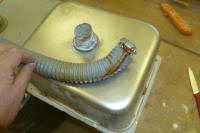

An old access hole at the aft end of the outboard well was next on the list. The owner had requested that I install a regular inspection port in this space. This was a straightforward task. I marked the outline of the new inspection port on the surface, as well as its required cutout, then cut out the opening as needed. I masked around the outside of the flange, then installed the inspection port with screws and sealant. I left the excess sealant around the edges to cure before removal.

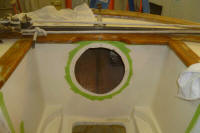
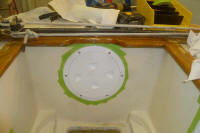
Finally, I applied primer to all the deck patch areas, having determined from yesterday's test that it would cure as anticipated--the final step before I could begin application of the nonskid surface.
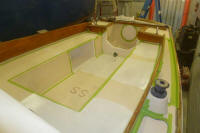
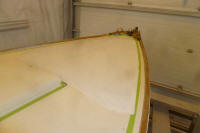
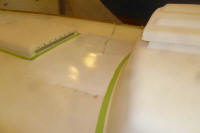
Total Time on This Job Today: 2 hours
